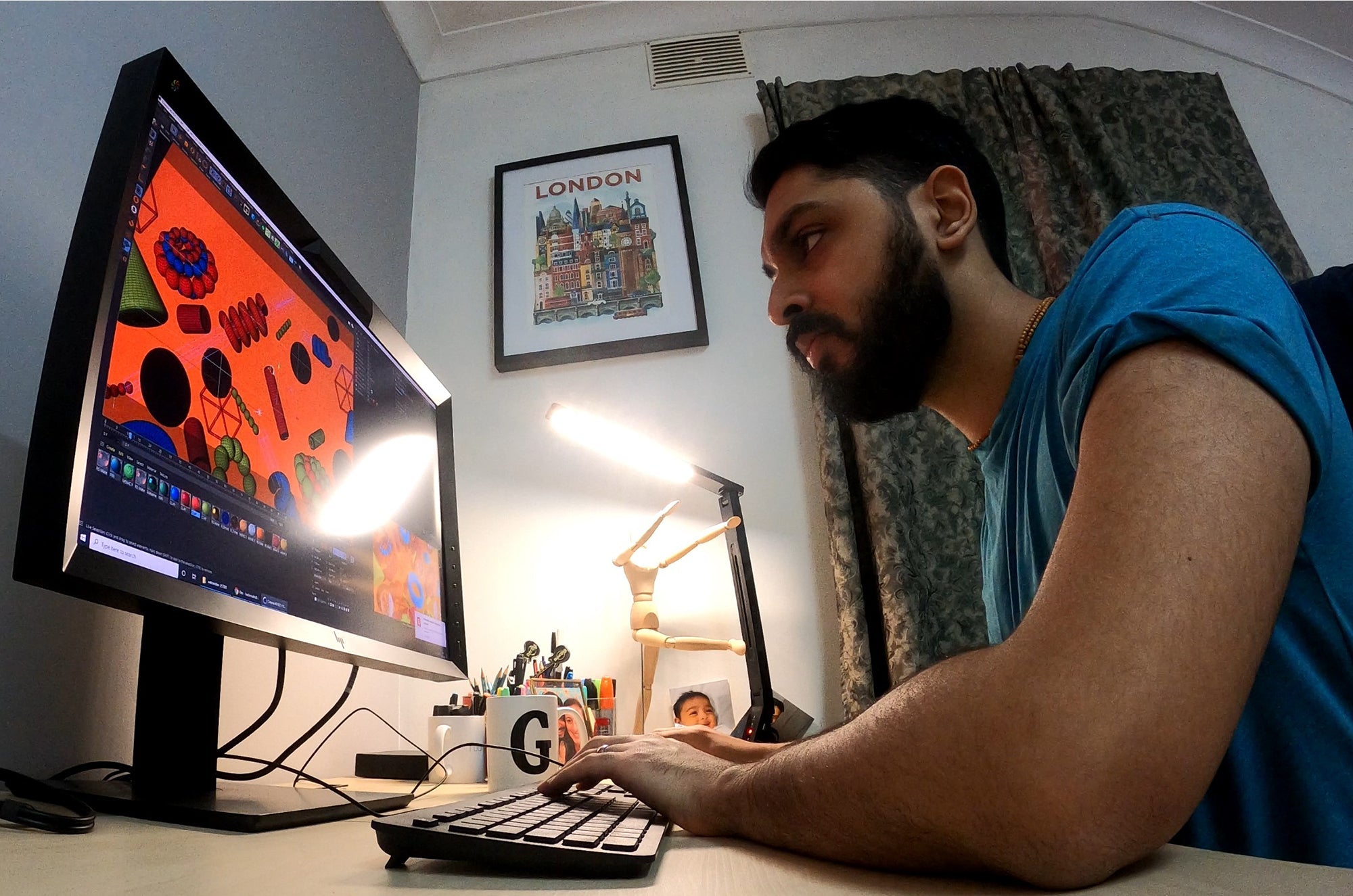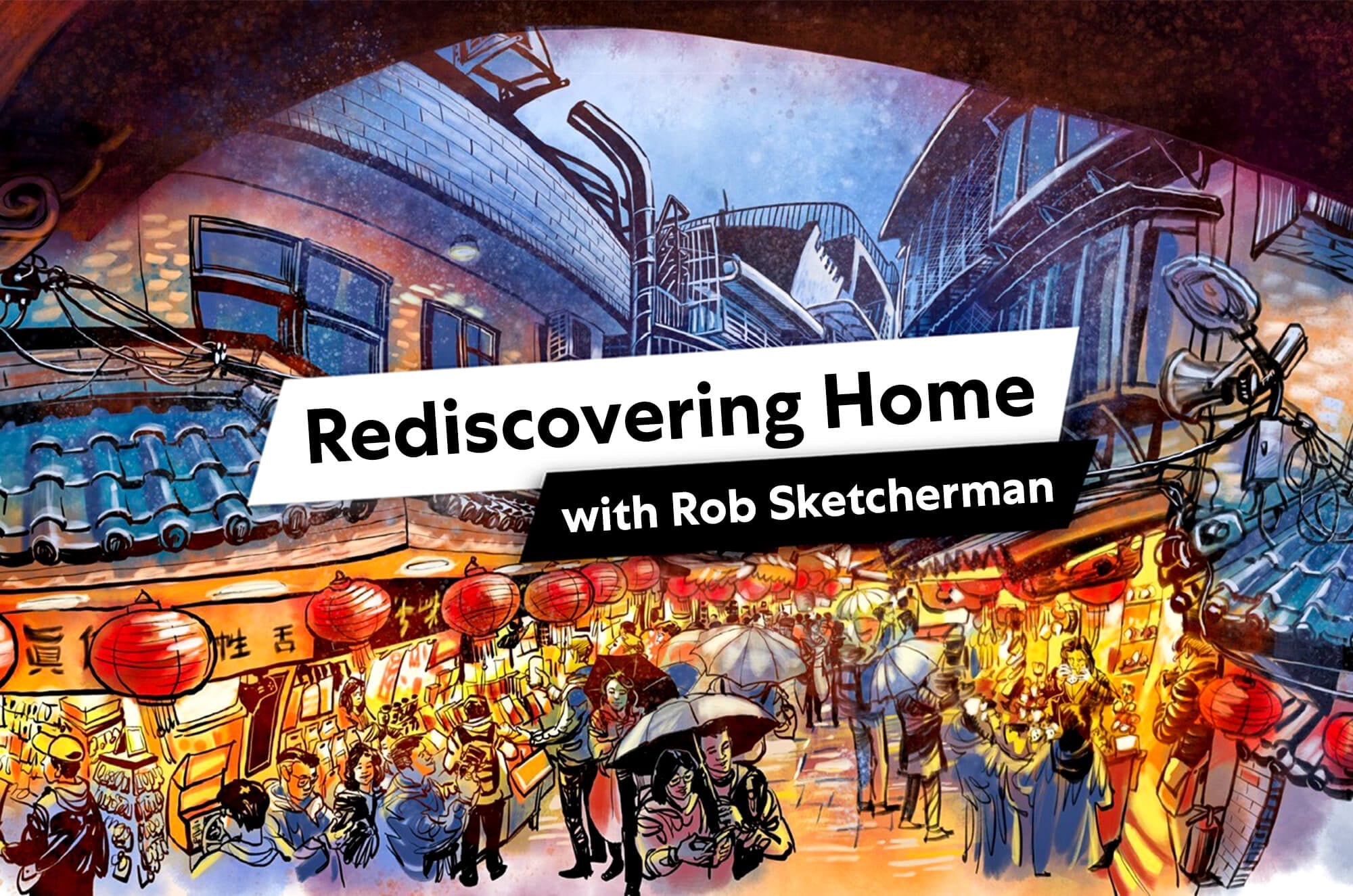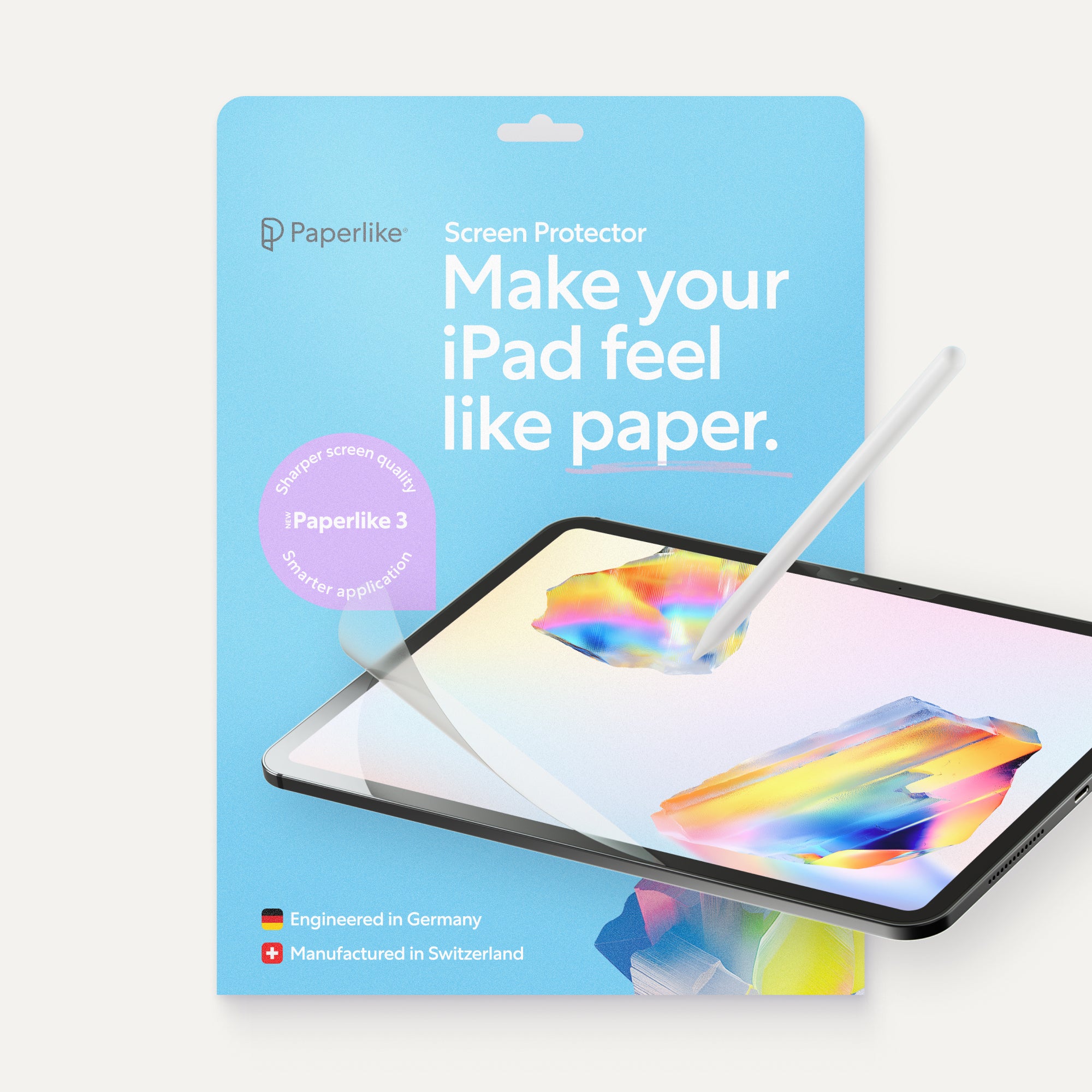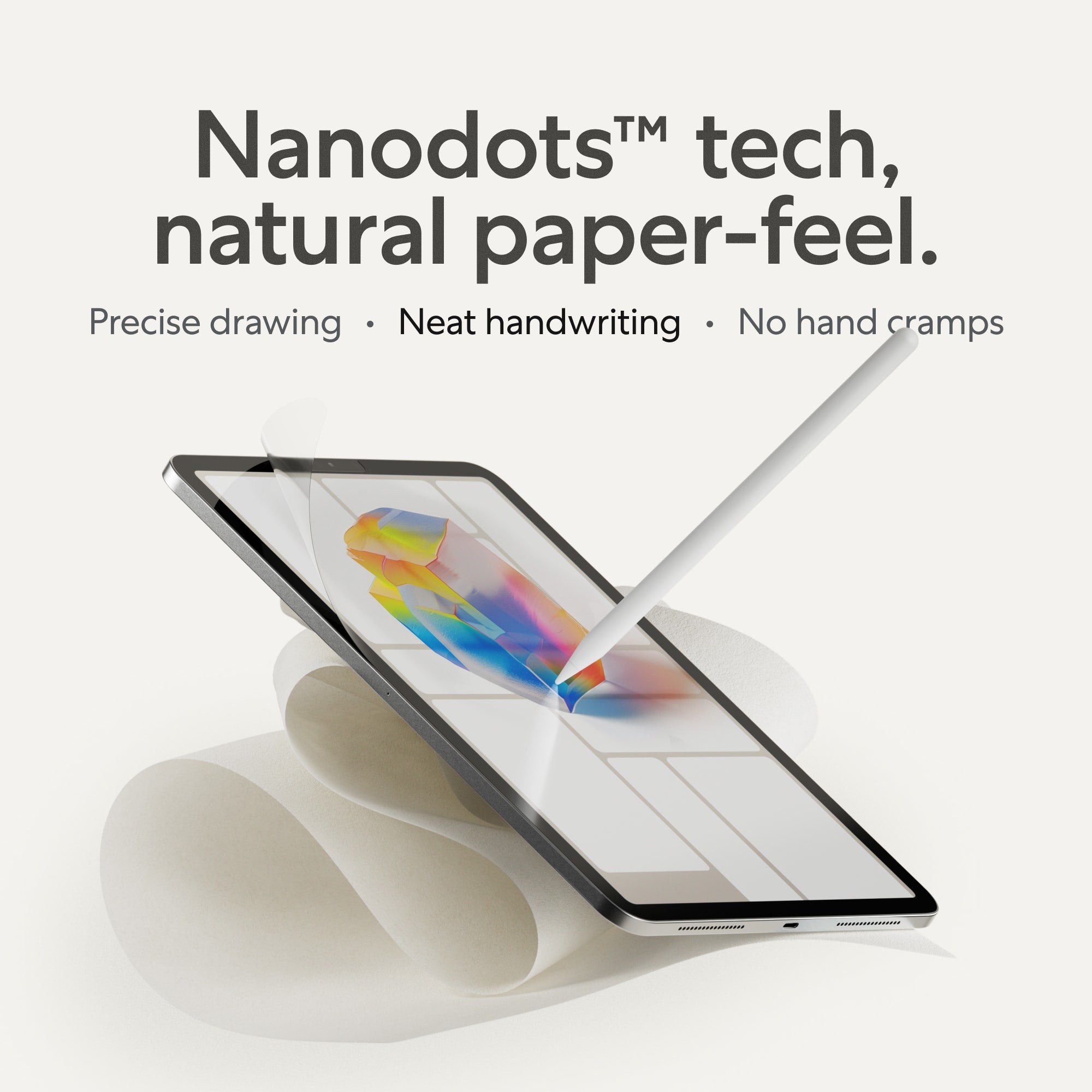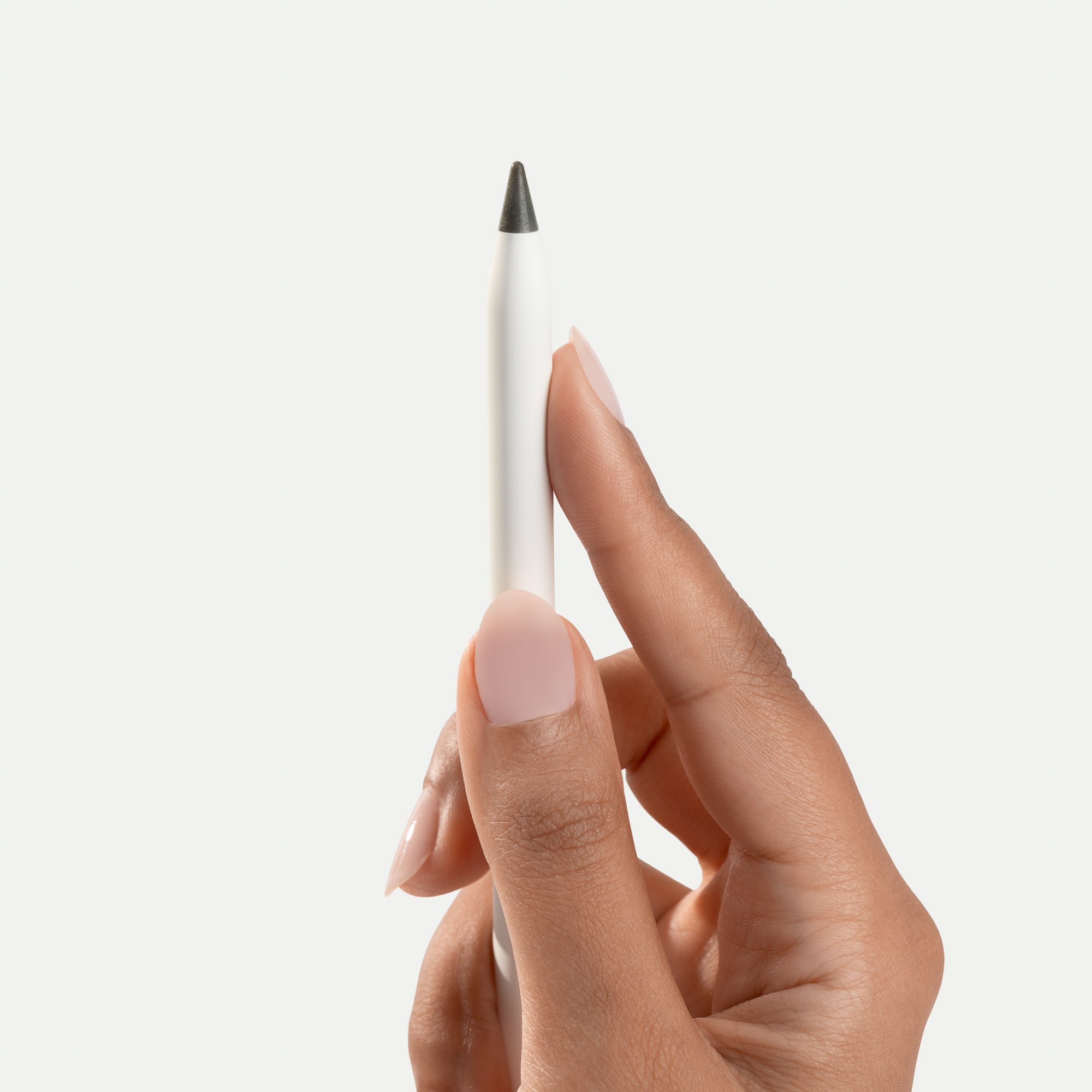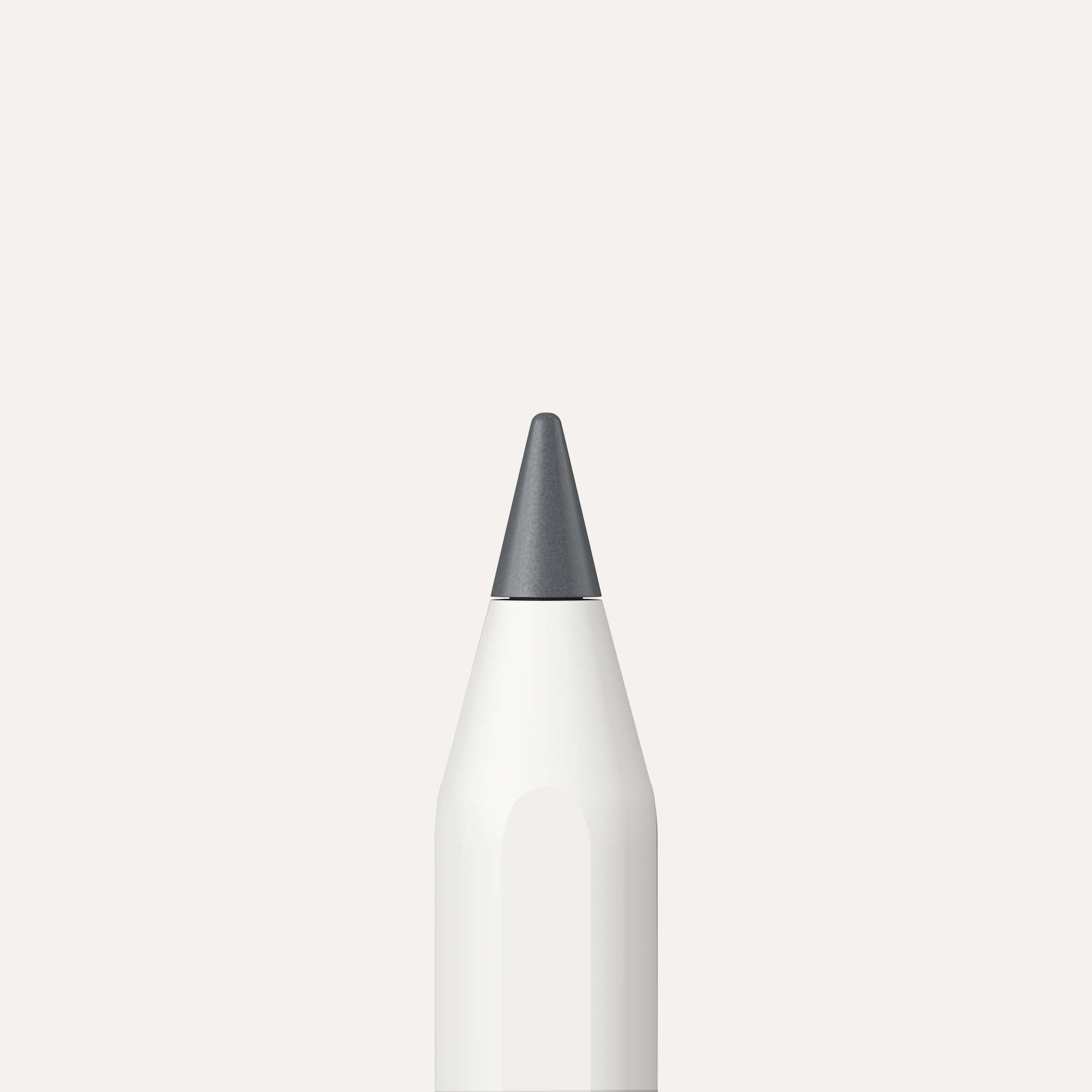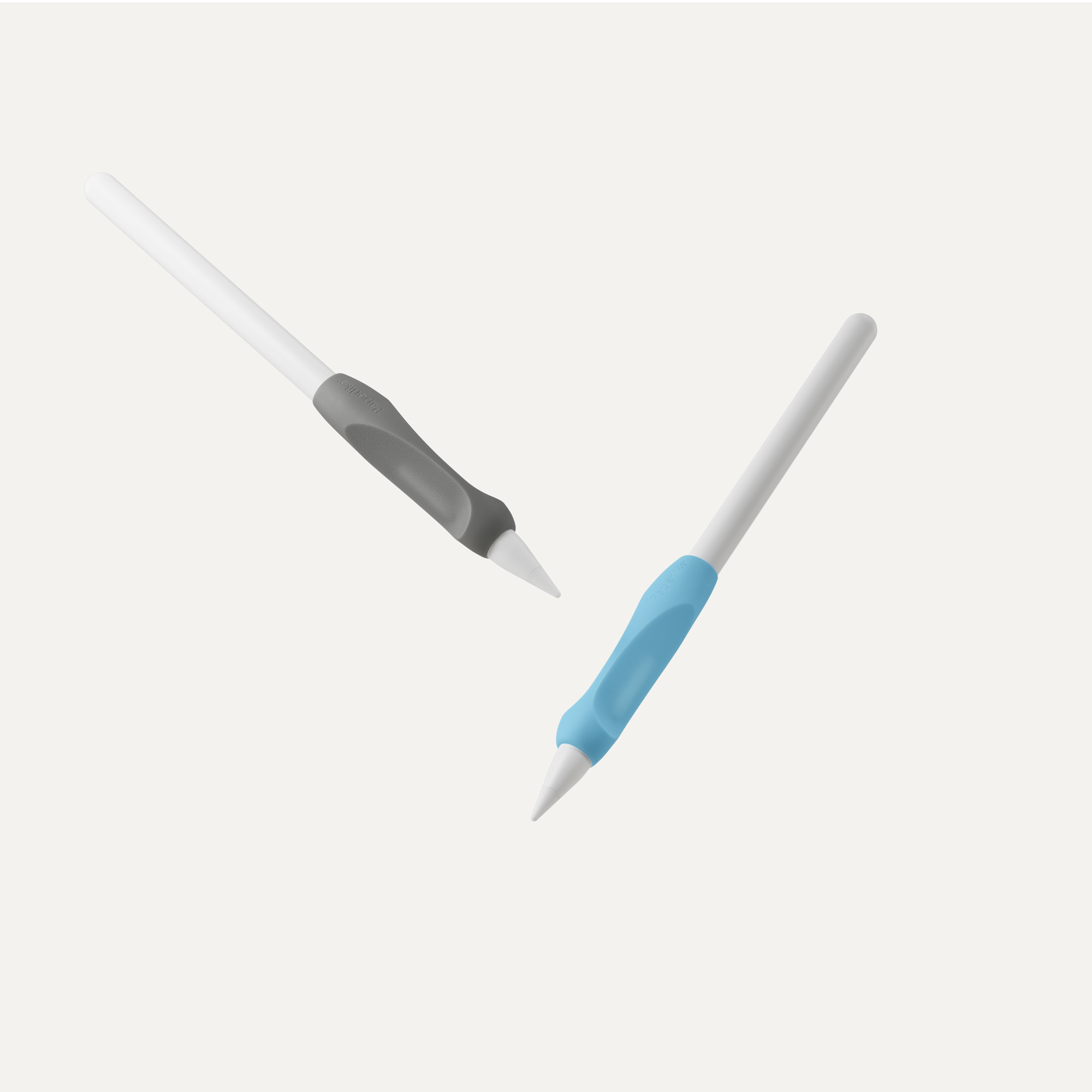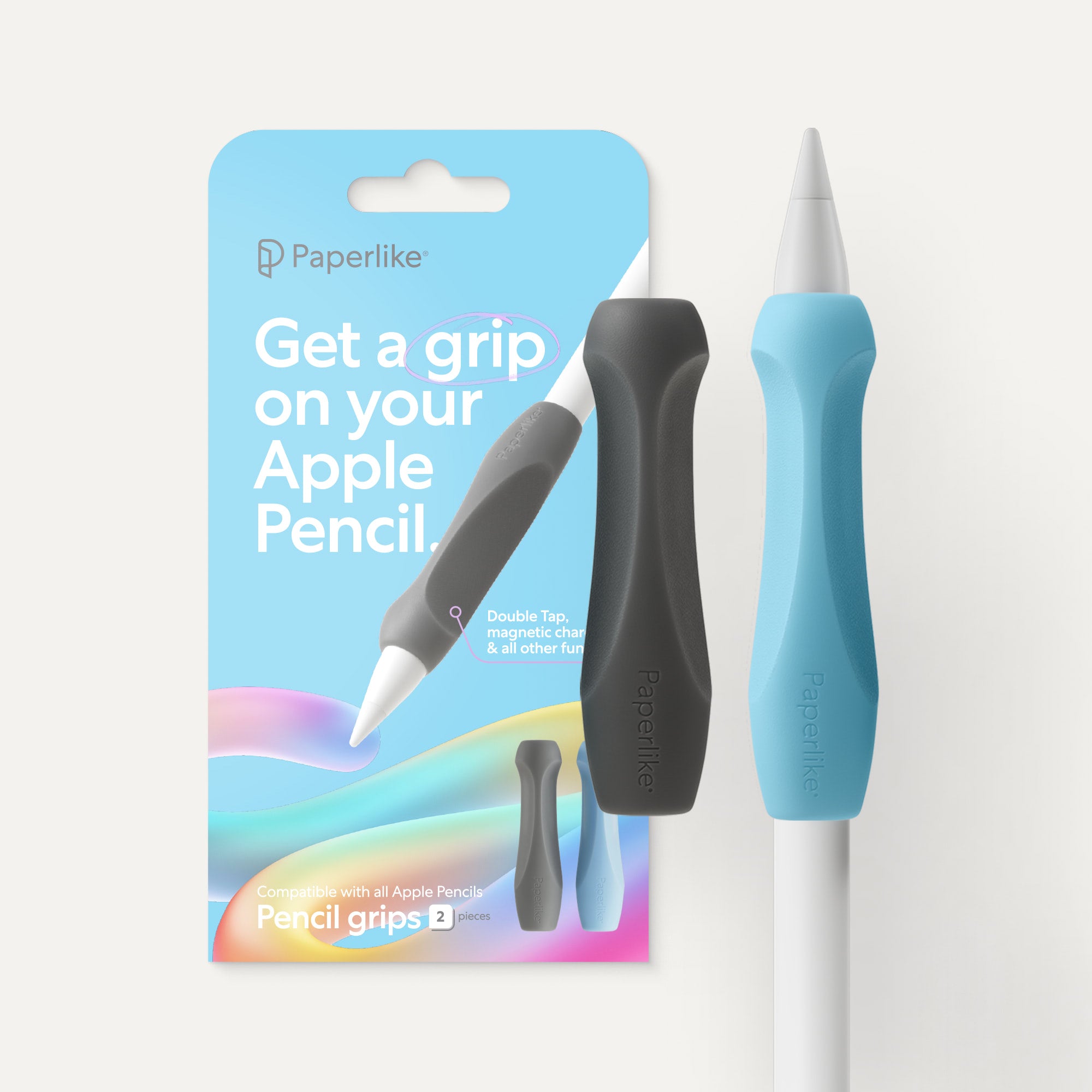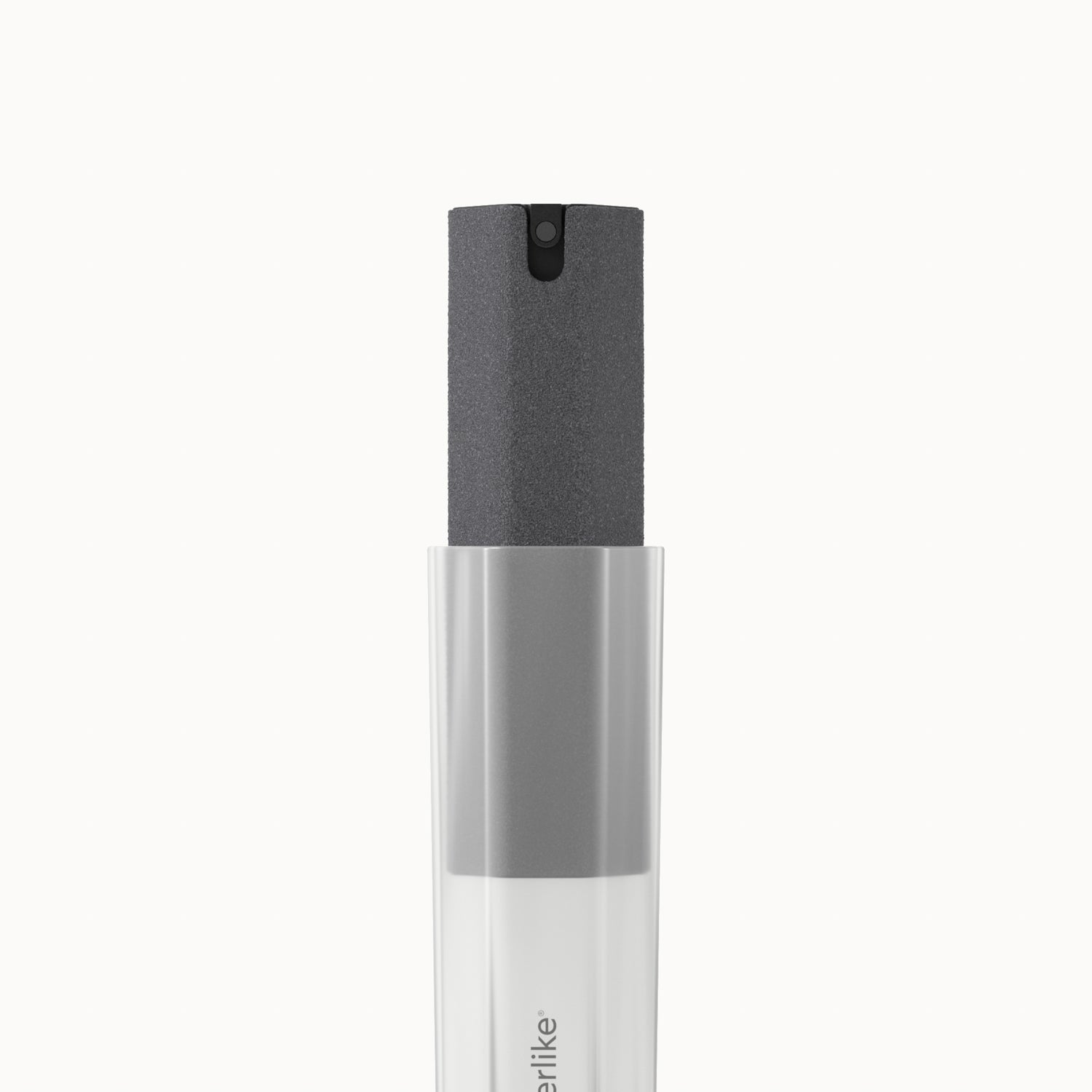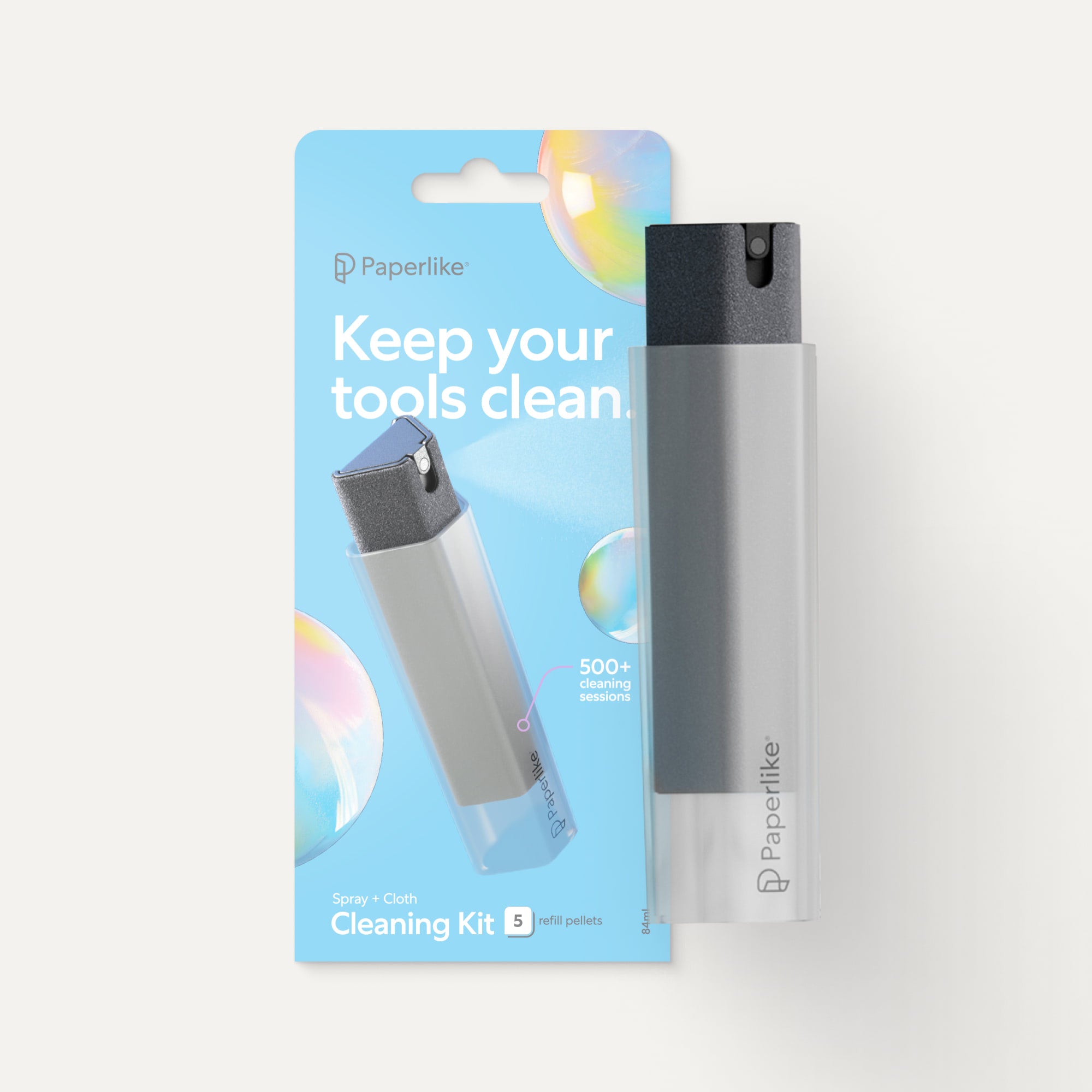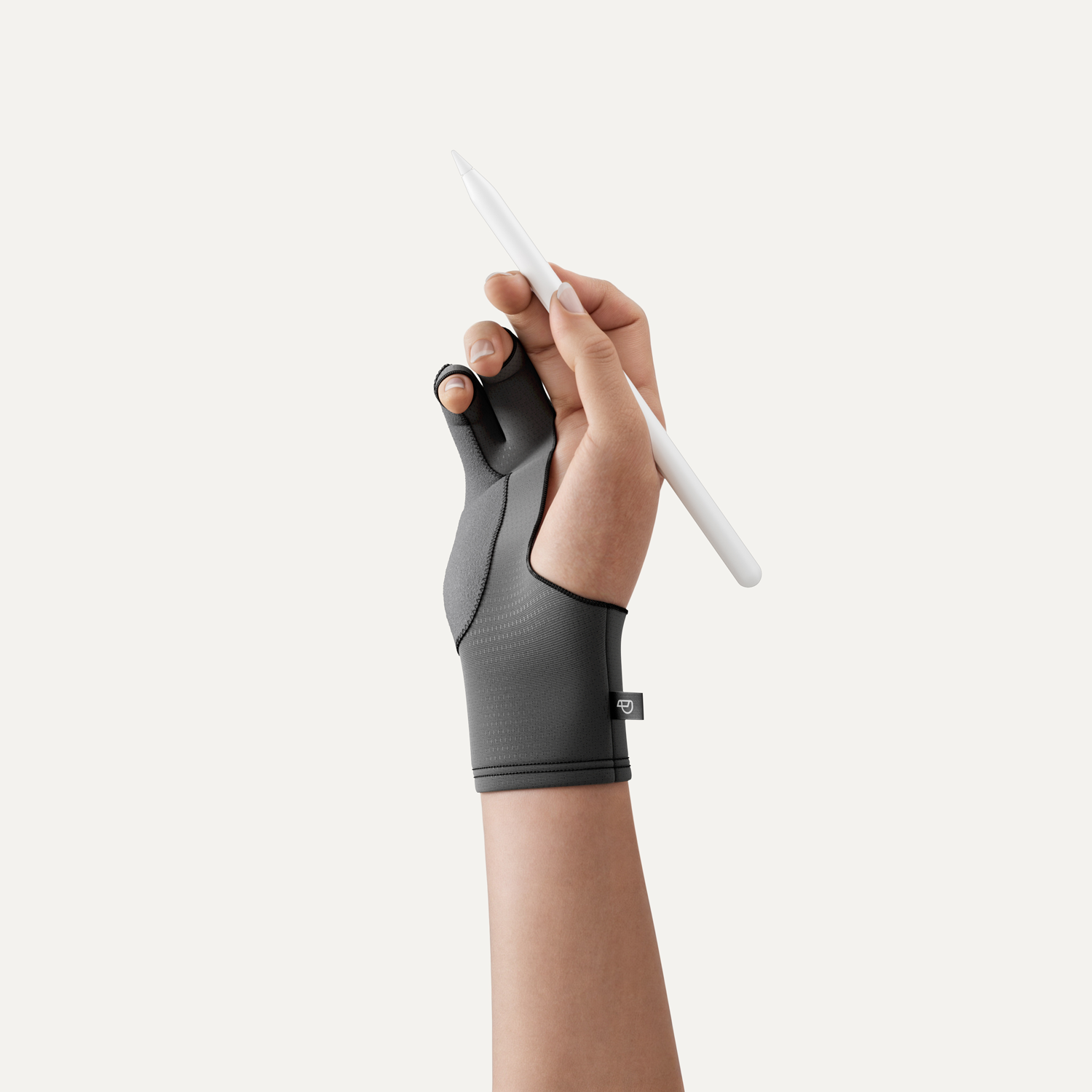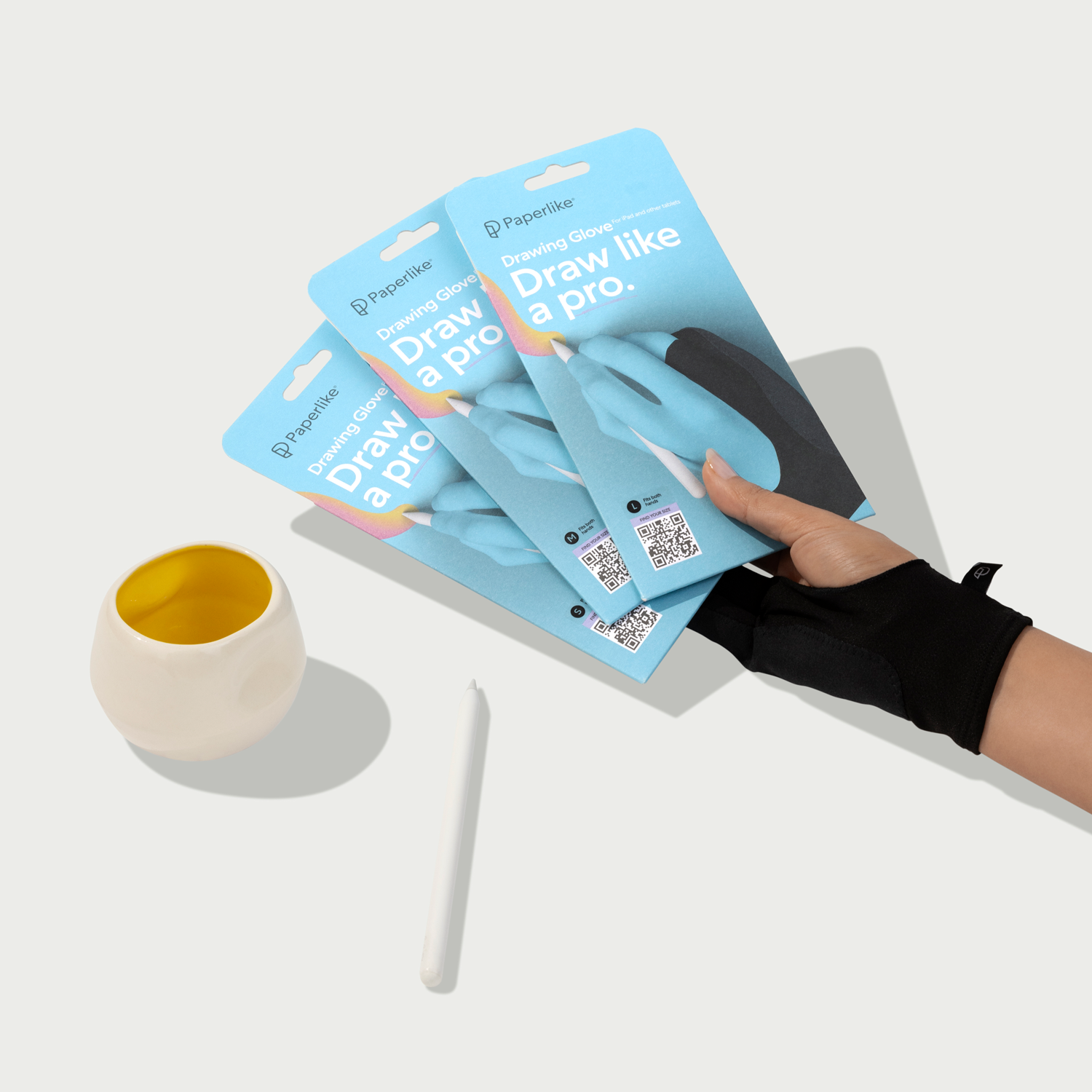Whether you’re trying to design a logo, sketch a portrait, or create an incredible fantasy landscape, everything about drawing is based on real life.
Even so, most artists use references they find online or in a book and completely overlook the opportunity to get out and explore the world around them.
In this guide, we’ll talk about how to draw outside, what equipment you’ll need to get the job done, and how modern digital tools like tablets and mobile apps are changing the game.
Let’s jump right in.
#toc#
Introducing our experts
At Paperlike, we’re passionate about drawing and art — but we aren’t experts on the topic.
In this guide, we’ll talk to professional artists who know what they’re talking about and are happy to share their knowledge to help other artists grow.
Without further ado, let’s meet our experts:

Rob Sketcherman
A self-described “nice guy + gadget geek”, Rob is an iPad artist and urban sketcher based in Hong Kong. He’s also a passionate member of the Urban Sketchers global community and has given talks and workshops around the world about both digital art and urban sketching.

Melanie Chadwick
A UK-based illustrator and designer, Melanie is familiar with digital mediums. When she’s off the clock, Melanie loves to explore the nearby landscapes and countrysides using traditional watercolors and sketching tools. She regularly runs sketching workshops and provides live illustration services for select clients.
Part 1: Drawing on location
This section covers everything you’ll need to know about drawing on location.
From easels and art supplies to basic sketching techniques, learn what you need to take your artistic mindset into the natural world.
Types of outdoor art
Drawing and sketching outside isn’t exactly a new idea. People have been doing it for centuries.
While we aren’t planning to delve into the ancient history of cave painting, we’re going to touch on some of the common methods that modern artists use when drawing outside.
En plein air painting
This is a traditional method of painting that was popularized in the 18th and 19th centuries, as art supplies like easels and oil paints became more portable.
Many of the traditional techniques for this method are still in use today, but they’ve morphed into many forms. While you might still stumble across an artist with a painting kit and an easel, you can also find artists like Heide Annalise, who creates miniature outdoor paintings using old Altoids tins.
Urban sketching
Founded in 2007, Urban Sketchers (USk) is a global community of artists committed to drawing urban areas where they travel, live, and work. This style of outdoor art is different from traditional plein air painting in a few ways.
In addition to sketching rather than painting, urban sketchers aren’t typically focused on the rural or pastoral scenes that are often featured in traditional plein air work. The environments are usually (but not always!) urban or have some kind of urban element.
Urban sketching is also designed for journalistic storytelling. Rather than simply sketching an image, sketchers are encouraged to write about their experience, describe the scene and their surroundings, and share that as part of their artwork.

Rob Sketcherman, a leader in the USk community, notes that urban sketchers are encouraged to pay attention to what interests them. “It starts with curiosity,” he says. “If you’re interested in urban sketching, you play to whatever interests you.”
According to the USk manifesto, drawings are a record of time and place. Urban sketchers should draw what they see and remain truthful to the scene they witness.
Travel sketching
While there is no complete definition of travel sketching, this art form might best be described as a more relaxed form of urban sketching and drawing.
Simply put, travel sketching is a way to capture your travels, whether you’re on an outdoor adventure in the wilderness or on a layover in an airport terminal.
By definition, travel sketching involves some form of travel, and this genre of art typically involves the use of limited supplies due to travel constraints. You would be unlikely to see a traveling artist hauling around a full-sized easel in the way that a traditional plein air painter might.
Instead, a traveling sketch artist might use a sketchbook, colored pencils, or art supplies that are specifically designed for portability.
It’s important to note that the setup will vary from artist to artist. Travel writer and sketch artist Candace Rardon uses everything from acrylic inks to watercolors to create beautiful pieces of travel art. By contrast, Pietro Cataudella often creates extraordinary works of travel art using pen, ink, and a touch of digital manipulation.
Other forms of outdoor art
As you might expect, there is a variety of outdoor art that doesn’t fall into any specific category.
Melanie Chadwick, based in Cornwall, completed a sketch-a-day project during 2020 where she toured her own city and created a daily postcard sketch from her observations.

While this type of art might not fall exactly within the defined bounds of urban sketching or en plein air, it’s another form of outdoor drawing that captures a specific time and place in a unique and interesting way.
Outside of the more traditional or predefined categories mentioned above, there is no right or wrong way to draw outside. Whether you use crayons, a pencil and eraser, or very high-end art supplies, drawing outside can be an open-ended experience and a refreshing change of pace.
Benefits of drawing on location
Beyond providing new ideas and inspiration, drawing outdoors can also provide a wide range of skills to help even seasoned artists improve.
Take a closer look at some of the major benefits that you can gain from leaving your art studio behind and stepping into the great outdoors.

Drawing from real life
When learning to draw from behind a desk, artists often use resources like still photos and drawings from other artists as a reference.
While this is great for beginners who are just learning the basics and want to focus on getting the details right, it can lead to bad habits that require retraining further in your artistic career.
Rob explains why: “It's really important to draw from life because of the way we interpret shapes. When you draw from a photograph, the perspective is already flattened. The light is already fixed.”
Artists relying exclusively on these secondhand source materials can disadvantage themselves by using art that is already one step removed from reality.
Any imperfections that the original artist or photographer captured in their work — including any warping and perspective shifts caused by their equipment — can make their way into your work and diminish its authenticity.
By drawing from life you’ll gain first-hand, interactive experience with how light and objects interact. You’re also learning to trust yourself in the process.
Melanie says that observational drawing is powerful because you’re seeing the shapes that are directly in front of you without having that information filtered through someone else’s work.
“You’re just seeing what’s there and then you’re able to put it on your paper,” she said. “You’re trusting yourself, and you’re growing that trust in your ability as well.”

Learning to edit
One of the biggest benefits of drawing outside is that engaging in an active environment.
Unlike drawing a bowl of fruit in a studio or sketching a picture on your computer screen, outdoor locations are active environments. The light changes. People and animals move through the scene. Wind and weather can affect how you experience your world.
As an artist, it’s impossible to draw every single detail as though it were frozen in time. Instead, you’ll have to learn to edit your work by emphasizing specific details and eliminating clutter as you make artistic choices in real time.
Rob says that this skill is often underestimated and overlooked, even by artists who have been drawing for years.
“If you go to a really busy place like a street market in Hong Kong and you don’t know how to edit, you will be bowled over by the amount of activity and the details that pop out at you,” he says.
“How you choose your focal points, how you choose to focus the story in a scene — those are things you can only learn if you draw from life.”
He also points out that this skill translates to a wide variety of tasks, whether you need to create a sketch to improve understanding or draw a map for a friend. It’s all about the ability to translate what you see accurately onto paper and show it to someone.
“That,” says Rob, “is an incredibly useful skill.”

Experience your environment
While not strictly art-related, both Melanie and Rob agree that gathering firsthand experience about your environment is a huge benefit to drawing outdoors.
Learning your way around, gaining a sense of your surrounding environment and your place in it can help you stay grounded and keep your perspective while simultaneously expanding your horizons.
During her 2020 postcard-a-day project, Melanie both rediscovered and reimagined the city in her own backyard by walking and driving to locations that she thought were interesting or that offered some kind of artistically compelling feature.
“You really get to know a place by spending time in it,” she says. “If you just go in and take a few photos, you aren’t really looking. You’re just taking a few quick snaps.”
As a result, she’s more knowledgeable about the history of the city and everything it can offer. Whether she’s conducting a workshop or having a conversation with a friend, Melanie is equipped with a wealth of information that she gathered after a year of taking her sketchbook outside.
Rob shares a similar experience in Hong Kong, where he’ll often sit and observe street markets: “Every neighborhood has a street market. I love drawing them because you get a feel of the neighborhood from the people who walk past.”

Overcome social anxiety
For many artists, sketching and drawing are often done at home or in a classroom setting. Taking your art to a new location can be an intimidating process, especially if you don’t like being the center of attention.
But, as Melanie points out, using art is a great way to overcome the social anxiety that accompanies doing something completely out of the ordinary.
When she first started, Melanie says that she went out to sketch early in the morning in order to get herself more comfortable with the idea of drawing outside. She didn’t like being watched or engaging in an activity that was out of the ordinary.
After a few weeks, she had a revelation.
“I realized that a lot of people, although they might look at you and walk on, they’re not really paying that much attention to you. They’re just kind of noticing that you’re there,” she notes. “And then they just walk on.”
Melanie says that every now and then, someone will walk up and speak with her — but there is nothing wrong with that. In some places where she visits frequently, she became part of the regular environment.
She explains: “I do meet a lot of people when I sketch in different places, especially if I’m returning to an area. I probably did about 20 postcards in this little fishing village called Cadgwith, and I would normally go at the same time every day and meet the same people and connect with them.”
That level of connection is important, Melanie says, especially for aspiring amateurs who may want to draw on a full-time basis. Talking to non-artists about art can be a key aspect to finding clients and acquiring work.
In Melanie’s case, simply being present in the environment helped to boost her credibility among her local clientele and gave her new opportunities to talk about her artistic style.

Find your flow
If you’re sick of being trapped inside or you’re overwhelmed with work, drawing outside can help you relax and switch your focus.
A growing body of research indicates that getting outside and exploring nature improves mental health. If you want to improve your drawing skills, outdoor sketching can help you relax by narrowing your focus to the key elements of an image while you translate that to paper.
When she first started sketching outside, Melanie used that artistic focus to great effect by simply sitting in front of a building and sketching. She was able to relax and pay attention to the details in front of her.
“You find that when you’re drawing from life — when you’re really looking at something — everything else that was in your head that may have been weighing you down kind of disappears,” she explains. “You’re so focused on the lines and the shapes that you’re almost always going to be in a flow state.”
When that happens, Melanie says that you’re mentally forced to let go of a lot of things so that you can take what you see and put it onto paper.
“And because you’re doing that, your brain switches off and you can totally relax,” she says. “It doesn’t matter how long you do it for. I think it allows you to just exist in that moment.”
Even if you’re not looking for a moment of zen, finding a way to focus your artistic talents on a scene that is constantly evolving may be enough to change your mindset or deliver a major breakthrough.
Getting started with on-location drawing
So far, we’ve covered some of the basic types of outdoor art and several of the benefits that you can enjoy by taking your art outside.
In this section, we’re going to talk about what skills you need in order to start drawing outdoors.

Choosing a location
If you want to sketch outside, you need to figure out which locations to visit and what you should sketch when you get there.
When you’re just starting out and the world is yours to discover, consider familiar parts of town or locations with some scenic value and write those destinations on a list. You can also use online tools like Google Maps to search out interesting locations, or look up areas nearby that are known for scenic opportunities.
Next, take some time to think about what you might want to sketch. Consider the time of year and the time of day, and the weather. On a cold or rainy day, you may want to sit in a downtown coffee shop and visit a park when it’s warm.
Having a sense of time and place can provide some unique opportunities for you as the seasons change. If you’re interested in nature, visiting a bird sanctuary during a migration season will be vastly different from sketching trees during late October.
What’s important is that you don’t overthink it.
Find a place that matches your interests and your schedule, visit that location, and give your artistic eye an opportunity to find a subject once you get there.

Choosing a subject
When you arrive at your destination, you’ll need to look around for something to sketch.
If you’ve been to a specific location before, you may have a few ideas in mind — but keep your mind and your eyes open. Since outdoor scenes are rapidly evolving, be sure to keep an open mind and be ready to change your plans if something new or exciting happens while you’re on location.
If you want to add a level of consistency to your work, you can also pick out unique subjects and create a collection of sketches of that specific subject.
“If you find a scene too intimidating, make a collection,” says Rob. “It could be anything you want. Bags, shoes, glasses. Don’t even worry about color.
Find something that interests you, and don’t draw stuff that you completely hate.
It’s very important to draw stuff that you have an interest in.”
Rob did this recently with old-style Hong Kong letterboxes, which have fallen out of style in recent years. He wanted to record the doorways where they were still in use and found that every scene where these letterboxes exist was different and unique. His hunt for this subject became an expanding series in his portfolio.

“It’s completely spontaneous,” he says. “I’ll use Google Street View to check areas, or I’ll ask friends if they’ve seen them. Then I’ll do a lot more research, go scout out a location, and be very focused when I tackle the subject.”
But both Melanie and Rob stress that you don’t have to get complicated.
Melanie often chooses a subject based on her previous experience with a location — but something has to catch her eye first. Buildings that have character, charm, or some historical element are always attractive.
“Sometimes, I’m out sketching one building and then I notice another building over there,” she explains. “So then I’m going to come back the next day and draw that one. But I don’t want to spend too much time planning it out all in advance. I want to go do it and get it done.”
That, says Melanie, is the most practical approach — especially for serious artists who are trying to make time to sketch every day.

Making time to sketch
Both Rob and Melanie agree that one of the biggest considerations when drawing outdoors is making time to sketch, but this doesn’t mean that you need to devote your entire day to a single outing.
During her postcard project, Melanie dedicated roughly 15 minutes to each black and white postcard, not including the travel time to and from the location. For pieces with color, she might spend 25 to 30 minutes on a sketch. Very few pieces took more than an hour, and she would only commit that kind of time on the weekend due to her professional commitments.
On the other hand, Rob prefers to spend anywhere between 10 and 20 minutes observing his environment and getting a feel for his surroundings before he even settles down to draw. From that point, he can spend hours in a single location.
But, says Rob, while you can always commit more time if you enjoy it, half an hour is a good limit for anyone just starting out.
“Do a simple line drawing or a few, if you can,” he says. “Anyone can find 20 to 30 minutes a day, where they're just sitting down somewhere and looking at something.”
Mel says that the most important thing is to keep going, to get into the habit of drawing every single day. That can be tough sometimes, especially between weather, work, and life, but it makes all the difference.
“Anyone can sketch,” she says, “but not everyone has discipline or perseverance.”
That commitment becomes a habit and, by drawing every day, you’ll continue to improve.

Potential obstacles
No matter how many tutorials you watch and how much guidance you receive, there will always be a few obstacles to consider before heading outdoors.
We’ll cover the main considerations here.
Safety
First and foremost, you’ll want to stay safe when exploring your environment.
In urban areas, pay close attention to your surroundings and the neighborhood you visit, and use caution when traveling through dangerous areas.
If you’re feeling uncomfortable, Melanie suggests standing rather than sitting because it can keep you focused, on task, and prepared in case of trouble.
For artists who would prefer to sit, Rob always finds a place where a wall is behind him — even in the safest parts of Hong Kong — so that he is never surprised from behind.
It’s also worth keeping in mind that some supplies are more difficult than others to conceal. While a sketchbook and a pencil can be tucked into a backpack, a large canvas and a painter’s easel will be much easier to notice.
If you’re heading out into nature, be sure to let someone know where you’re going and when you expect to be back. Even simple trails can become hazardous under the right conditions. In many cases, preparedness is the best remedy for an emergency.
Weather
It goes without saying, but rough weather conditions can make it a pain to draw outside. Some days, it may make more sense to stay indoors — but that doesn’t always have to be the case.
While you’ll need to protect your fine arts equipment from the elements, you can make different choices during rough weather to make outdoor sketching easier.
For example, rather than a setup designed for oil painting, you might consider taking a pen and a sketchbook to draw on a windy day. During rain, choose a location with an overhanging roof where you can stay dry.

Equipment & gear
Your equipment shouldn’t be a major obstacle when it comes to traditional outdoor sketching.
In this section, we’ll cover a few specific accessories you might want to consider when drawing outside.
Sketching equipment
For minimum requirements, you’ll need a sketchbook and a pen or pencil. Melanie recommends this approach for new artists because it lowers the barrier to entry and keeps things simple.
“Just go out with a pen and a sketchbook and just go for it!” she says.
If you want to add complexity to your art while on the go, here are a few items to consider when sketching and drawing on the go:
Pen or pencil. This is essential for basic linework and outlining. More experienced artists (and amateurs with a perfectionism complex) can use a pen to add permanence to their lines.
Kneaded erasers. Useful for erasing stray lines and helpful if the wind tries to lift your pages while you sketch. Melanie doesn’t use erasers and doesn’t recommend them to beginners because they can start to inhibit your drawing and cause you to second guess. If you carry one, resist the temptation to erase your mistakes. Embrace all your marks!
Colored pencils and crayons. Ideal for working your sketch up in layers, you can add textures and splashes of color to your sketches while in the field. Don’t be afraid to use color to define your space.
Fineliners. Great for precision work, fineliners allow you to create strong outlines and highlight key details as you draw. Especially for artists working only in black and white, a fineliner can help you make pencil lines more permanent and add structure to your sketch.
Watercolor brush pens. In the same way that classic impressionists used tubes of paint while painting on location, you can add a splash of color to your sketch using a watercolor brush pen. These pens are water-soluble, making it easier than ever to practice your watercolor on the go.
Sketchbook. Essential for practicing your art on the fly, a sketchbook can go with you anywhere and everywhere. Be sure to pick a size that suits your needs with paper designed to support your preferred drawing style.
In more traditional styles like en plein air painting, you might need watercolors and higher-end equipment.
Outside of those unique situations, they aren’t strictly necessary for success.
Other essentials
Beyond a pen and sketchbook, what do you need to get started? Our expert artists had a few suggestions worth mentioning:
Sunglasses. Depending on the time of day, sunglasses may be essential for you to study your subject. If the early morning light is in your eyes, or if you’re staring at a bright wall under a noonday sun, you might not be able to see details clearly.
Hat. Melanie suggests a hat to protect yourself from the sun during the summer months. The brim of the hat can also block any glare from the sun while preventing a burn.
Chair. Rob likes to sit awhile and take in the essence of a place before he starts to sketch, but it’s sometimes hard to find a good seat! Rob brings a compact, one-legged stool with him (no larger than an umbrella) so that he can find the perfect angle and set up in the perfect spot.
Before heading out, consider your environment and your personal situation. You might also want to bring water, a snack, and even bug spray as you explore the natural world.
Grab a backpack, all of your essentials, and get out there.

Part 2: Going digital
In part one, we covered everything you need to know about drawing outside using traditional methods like pen and paper.
In this section, we’ll cover what you should know about drawing outside using a digital tablet.
Traditional vs. digital sketching tools
There are major advantages and disadvantages of using digital equipment when drawing outside, which we’ll cover in this section.
But it’s important to note that using digital equipment doesn’t mean you’re competing with traditional art. Sketching with traditional tools is always a viable option.
Melanie uses traditional equipment almost exclusively when working outdoors, even though she uses digital tools for most client work.
Let’s take a closer look at how using a stylus and tablet is different from traditional means.
Advantages
Without a doubt, digital tools are revolutionizing art.
Using an iPad, an Apple Pencil (and a Paperlike), along with a dedicated drawing app like Procreate, it’s easier than ever for artists to express themselves digitally.
As you might expect, much of that ease of use accompanies artists who are willing to take their equipment with them when drawing outside.
Fewer required supplies. In Part 1, we mentioned you could use tools like fineliners and watercolor brushes to create variety when sketching outdoors. Going digital, all you’ll ever need is your tablet, stylus, and digital app. Your software contains any tool that you need to create and style your sketch. If you don’t want to carry and maintain a kit of brushes and paints, digital may be the way to go.
Greater artistic flexibility. Similar to the first point, a digital canvas gives you unlimited flexibility to sketch and paint whatever you want. If you want to draw on a mural-sized canvas, it’s possible. Want to create art using mixed media and a wide variety of brushes? You can get started with just a few taps.
Easier transportation. Fewer supplies make a tablet easier to carry. Just stuff it in your purse or bag and go. Some backpacks and satchels even have dedicated carrying sleeves for electronic equipment to improve convenience.
Expanded storage. You’ll never fill up your digital sketchbook. You can fit thousands of drawings on your device and have room left over. Plus, if you always use digital tools, you’ll have your entire portfolio with you at all times.
Capturing references. Need to capture a reference for later? Most tablets have the ability to take a picture, so it’s easy to snap a photo and finish your drawing later if you run out of time.
Accessibility. A physical sketchbook is just one more thing to carry. If you have a tablet, you may already be using it for something else. It may be easier to add sketching to that list and repurpose the device you already carry with you rather than purchasing pens, pencils, sharpeners, and sketchbooks.
And it doesn’t stop there. Rob says setup is fast and easy, without all of the muss and fuss that comes with setting up many forms of traditional media.
“You can get up and be sketching within seconds anywhere you find inspiration,” he notes. “I was using traditional media before. But now I’ve become a lazy bum, and I embrace it because I don’t have to clean things like fountain pens and paintbrushes.”
And for Rob, who likes to complete a sketch and move on, sticking to the Apple Pencil (no cleanup required) is just icing on the proverbial cake.
Related reading
- 30+ Best Procreate Color Palettes.
- 21 Procreate Tips You Have to Know (2022 Update).
- 20+ Procreate Fonts & How to Use Them.

Disadvantages
So far, we’ve discussed the major advantages when it comes to using digital tools.
There are also some major downsides that might make you reconsider, especially while outside and on the go.
Let’s take a closer look and see if those risks outweigh the benefits when you’re just trying to sketch your scene.
Power requirements. One of the most important disadvantages comes down to hardware requirements. Electronic devices consume power, which limits your capacity for art to the length of your battery. If your device is fully charged, you could sketch for hours without an issue — but if you’re using your tablet for more than sketching, you may end up sharing your power supply with other important tasks. Rob points out that a small power bank can solve this problem while adding a tiny bit of weight.
Higher equipment value. For some artists, an expensive drawing tablet like an iPad or a Surface Pro may simply be too much of an investment. On top of that, these devices are much more valuable, which could make you a target for theft while on an outdoor adventure.
Too many choices. While the artistic flexibility of the digital tablet can be a major advantage to some artists, you might consider it problematic if you find yourself flipping between menus in search of the “perfect” resource. If being spoiled for choice stalls your artistic process, this could be a downside.
Distractions. For some artists, a tablet is a massive distraction. Especially if your device has cellular capability, you might find yourself surfing the web rather than focusing on art. If you’re not disciplined, or if you’re easily distracted, bringing the source of your distractions to your sketching session may not be the best idea.
Sensitivity. All electronics are sensitive when it comes to the weather. While modern technology is more tolerant than older hardware, all electronics get temperamental when it’s too hot, too cold, or too wet. Using digital tools means that you’ll have to take this into account if and when you want to draw outside. Most of the time, these temperatures will coincide with your preferences, but you are more durable than your electronics.
Damage. If you drop a sketchbook, you can just pick it up. If you drop your iPad, you might be looking at a screen replacement and a hefty bill. Even with a case, electronics can’t take heavy punishment.
Most of these disadvantages can be overcome with planning and proper equipment. Charge your device before you take it somewhere. Get a case to protect your equipment, and don’t take it out in extreme conditions (where you probably wouldn’t enjoy sketching anyway).
But if you have an active mind and a hard time “switching off,” bringing a major source of distraction can interfere with your ability to focus.
“One of the big benefits of drawing outside is that you switch off, you get to relax, and you also gain observational drawing skills,”
says Melanie. “And you can start with just a few simple tools.”
Sometimes, keeping things simple is the way to go — and there’s absolutely nothing wrong with that.

Potential obstacles
While many of the obstacles to success are the same for digital artists as they were for traditional artists (covered in Part 1), how you approach these problems is different when you’re carrying electronic equipment.
Safety
As a matter of personal safety, you’ll need to be careful anytime you’re outside. Using valuable electronics ups the ante in some way because of the public understanding of your equipment.
If you’re carrying thousands in painting supplies in an urban environment, that might not be obvious to would-be thieves. Unfortunately, everyone knows that high-quality electronics don’t come cheap.
While it’s always important to pay attention to your surroundings and have a safety plan in mind, keep in mind that your drawing tools may attract attention in ways that a sketchbook never would.
Weather
We touched on this earlier, but electronic equipment handles differently in weather.
If you live in extreme environments with blistering heat or crippling cold, your equipment may malfunction when exposed to those conditions.
The upside is that these temperatures will mostly align with your own preferences. Even the most dedicated sketch artist probably doesn’t want to spend hours outside in freezing weather, trying to sketch a scene while wearing heavy gloves.
As with paper, your tablet will also be sensitive to water. You’ll need to take those factors into account when exposing your equipment to the elements.
Power
This is a problem exclusive to electronics. You’ll never need to charge your sketchbook or your paintbrush. Without power, your devices won’t function.
Be sure to stick your tablet and stylus on their appropriate chargers so that they have the power to perform when you need them. Otherwise, your artistic endeavors into the great outdoors will be going nowhere fast.

Equipment & gear
Realistically, you can find a variety of different options on the market today.
In this section, we’ll take a look at some of the best hardware, software, and accessory options available when you’re searching for digital equipment.
Hardware
If you’re using digital equipment, your hardware choices will determine your capabilities when drawing outside.
Because your tablet needs to be taken outdoors, you’ll need a tablet with internal batteries and a screen. These requirements eliminate many graphics tablets on the market today.
We’ve included a shortlist of tablets best suited for drawing outside.
Apple iPad. One of the most versatile devices on the market, an iPad is everything you could ever want when it comes to drawing and sketching. This device offers a wider selection of sketching and drawing apps than the other devices on our list, and it can be coupled with the Apple Pencil 2 for an unparalleled drawing experience.
Microsoft Surface Pro. If Windows is your preferred operating system, the Surface Pro may be worth your consideration. The Surface Pro is a tablet computer running Windows 10, which gives it a ton of flexibility when using software applications. Users on a Surface Pro will have access to high-end drawing tools like the full Adobe Suite, as well as hardware upgrade options (at time of purchase) to boost performance.
Samsung Galaxy Tab. The most cost-effective device on our list, the Galaxy Tab series is Samsung’s Android-based mobile tablet. Of our three contenders, this device is the least powerful — but it’s no pushover. The Galaxy Tab comes equipped with a beautiful display, great pen performance, and access to a handful of notable drawing apps.
While there are other mobile computing platforms out there, this lineup offers the greatest range of versatility on the market.
We haven’t suggested specific models for any product line because we know that powerful computing devices are never single-use items. If you’re planning to purchase a tablet, make sure that it’s a great fit for everything you need outside of sketching and drawing.
Whichever device you choose, you can find a combination of apps and accessories that allow you to explore your creative potential while away from your desk.

Software
Your software selection will vary greatly depending on your choice of hardware.
Some apps are exclusive to one platform or another, which can be frustrating. Below, we’ve touched on some of the best app choices for each platform.
Procreate — iPad. One of the most powerful illustration tools on the market today, Procreate is loved by professional artists around the globe. This app has the versatility to help you draw anything, and the internet is filled with tutorials to help you improve and create something new.
Adobe Fresco — iPad & Windows. This app stands out from other drawing apps because of its focus on creating a natural painting experience. Artists can experiment with watercolors and oils in a way that feels natural, even on a digital canvas. While other apps can deliver a similar experience, Fresco stands out for its focus in this specific area.
Adobe Photoshop - iPad & Windows. One of Adobe’s flagship products, Photoshop is a powerful tool that has long been used by creatives to sketch and draw. The iPad version is optimized for a mobile setup, but it offers excellent versatility for sketching and editing on the go.
Autodesk SketchBook - All devices. Available on every device, SketchBook can help you start sketches in one place and finish them in another. This versatile tool has everything you need to start from scratch or put the finishing touches on a complex piece of artwork. If you’re looking for maximum versatility coupled with an incredibly powerful toolkit, this is a great starting point.
Infinite Painter - iPad & Android. Another great app built around painting and drawing, Infinite Painter contains all the tools that anyone with a working knowledge of the digital art space will be familiar with. This includes layers, shaping and selection tools, and more. This app is powerful and gives you the freedom to create incredible works of art in record time.
Keep in mind that just because you start in one app doesn’t mean you have to finish there. In many cases, you may prefer the sketching functionality in one app and the painting capabilities of another.
Be sure to keep a close eye on the export tools inside your app of choice, and don’t hesitate to switch between apps in order to build a workflow that helps you create great art.

Accessories
No hardware/software solution is complete without accessories! There are still a few things to consider before you settle down to sketch things out.
Stylus. Your choice of stylus will vary with your hardware. For the iPad, the Apple Pencil 2 offers the best drawing experience by a sizable margin. For other platforms, your mileage will vary. Companies like Adonit and Wacom make a variety of stylus options that are compatible with Windows and Android devices, and the Galaxy Tab series comes with its own stylus.
Paperlike for iPad. One of the biggest problems that you’ll encounter when sketching on an iPad is the slick, glass surface. If you’re used to drawing on paper, the lack of friction can make it difficult to draw straight, precise lines. A Paperlike helps you fix that by transforming your iPad screen into a surface that feels like a page out of your sketchbook.
Case/Cover. We’re not even going to try to cover the ridiculous number of cases and protective covers that you can buy for your tablet or mobile computer. There are thousands of options to choose from, and each offers its own variety of protection. If you’re taking your sensitive electronics out into the wild, be sure to protect them.

Our recommendation
There are many digital drawing solutions out there, so what do we recommend?
After talking with thousands of artists about how they work and what they use, we firmly believe that the best combination for most digital artists includes an iPad, an Apple Pencil, Procreate, and a Paperlike.
This combination gives artists of every skill level the tools they need to fully unleash their creative potential.
Get out & draw!
And there you have it — everything you need to know about drawing outside.
Whether you’re planning to use a sketchbook and a pencil or grab a tablet and open an app, the only thing left is to get out there and start sketching.
Be sure to follow artists like Melanie and Rob on Instagram to see more of their incredible work.
Good luck!



